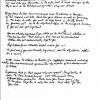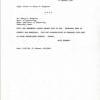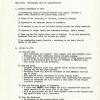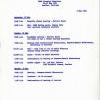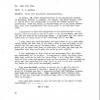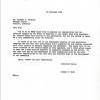Selecting Boulder as the Site for NCAR's Headquarters

Site of the Mesa Laboratory before construction, circa 1960s. (NCAR Archives, Mesa Laboratory Construction Records)
Walter Orr Roberts, the first Director of NCAR, was a visionary, both professionally and artistically. He had high aspirations for both for the new center and the structure that was to house it. At the time of his appointment as Director, Roberts was based in Boulder, as head of the University of Colorado's High Altitude Observatory. His selection tipped the scales toward the choice of Boulder as the site for NCAR's headquarters.(Four geographic areas had previously been singled out as potential locations.) Some of the many reasons cited were Boulder's central location for scientists at atmospheric research and training centers, its excellent research environment, and its advantages for studying particular atmospheric phenomena such as storms and mountain air currents.

Of the possible land parcels available, the dramatic Table Mesa top was the clear favorite. Roberts could see the spot from his living room window. Surrounded by undeveloped land, the mesa's dry western landscape was covered in juniper, pines, and wild flowers and frequented by a large herd of deer. Yet it was accessible to the university and to other research facilities such as the nearby National Bureau of Standards. Its dramatic presence suggested, as Roberts put it, "the dignity and importance of the future center and as a national scientific laboratory."
The 565-acre mesa was made up of five privately owned parcels of range land ripe for commercial development. A site-selection committee contacted the owners and put together a potential package encompassing the 28-acre mesa top and the hillsides leading down to town and back toward the Flatirons. However, before NCAR could lay claim to the site, a major political hurdle had to be surmounted. In 1959, Boulder voters had amended the city charter to include a "blue line" above which city water would not be supplied, a tactic designed to control development in the city's foothills. The NCAR mesa was located above that line. The months between selection of the site in November of 1960 and the purchase of the land in March of 1961 saw what amounted to a popular referendum on the desirability of the Center. The result was not only an agreement to supply city water to NCAR but a resounding endorsement of the organization as the measure passed by a margin of more than three and a half to one.
Preserving the natural landscape »
